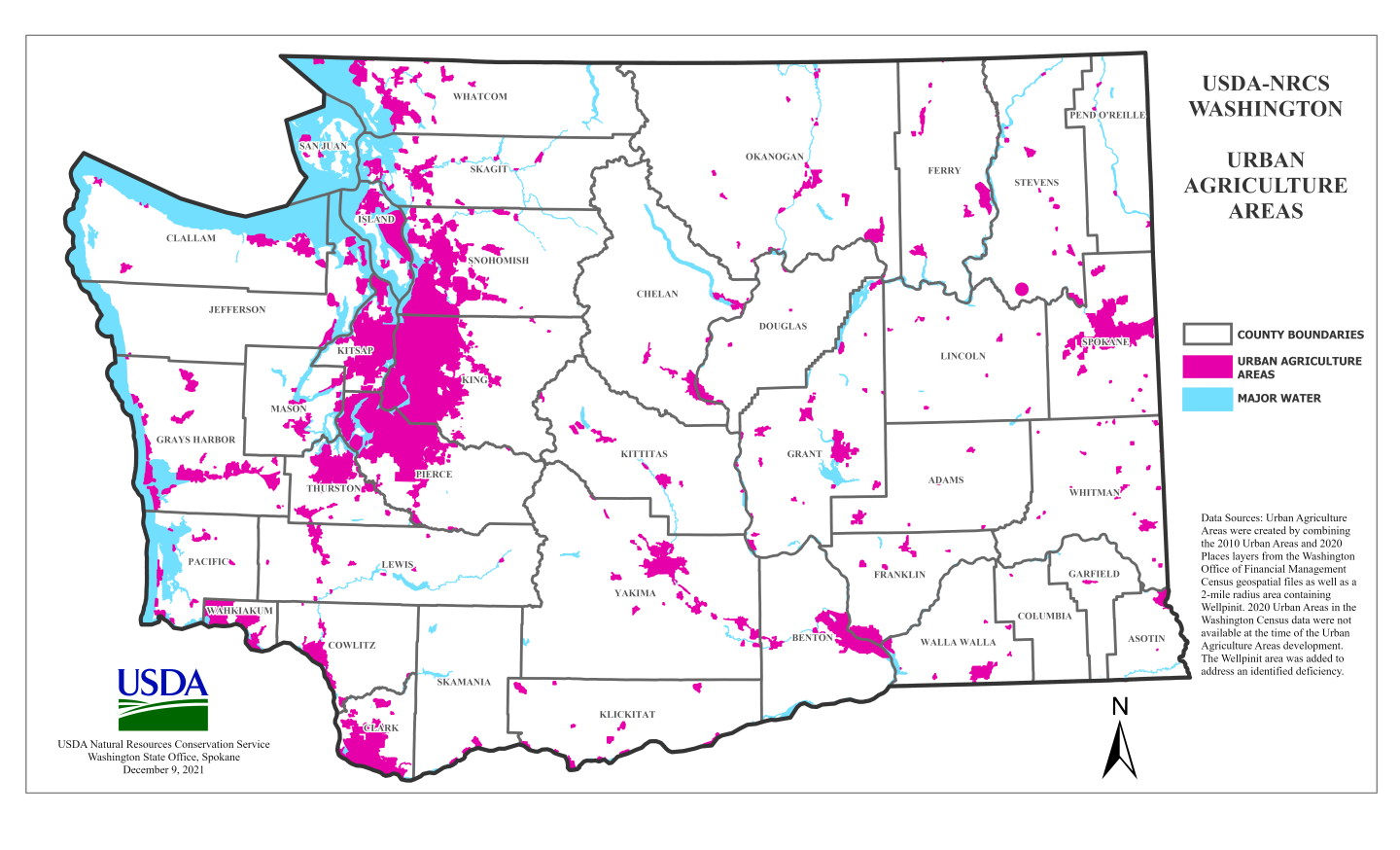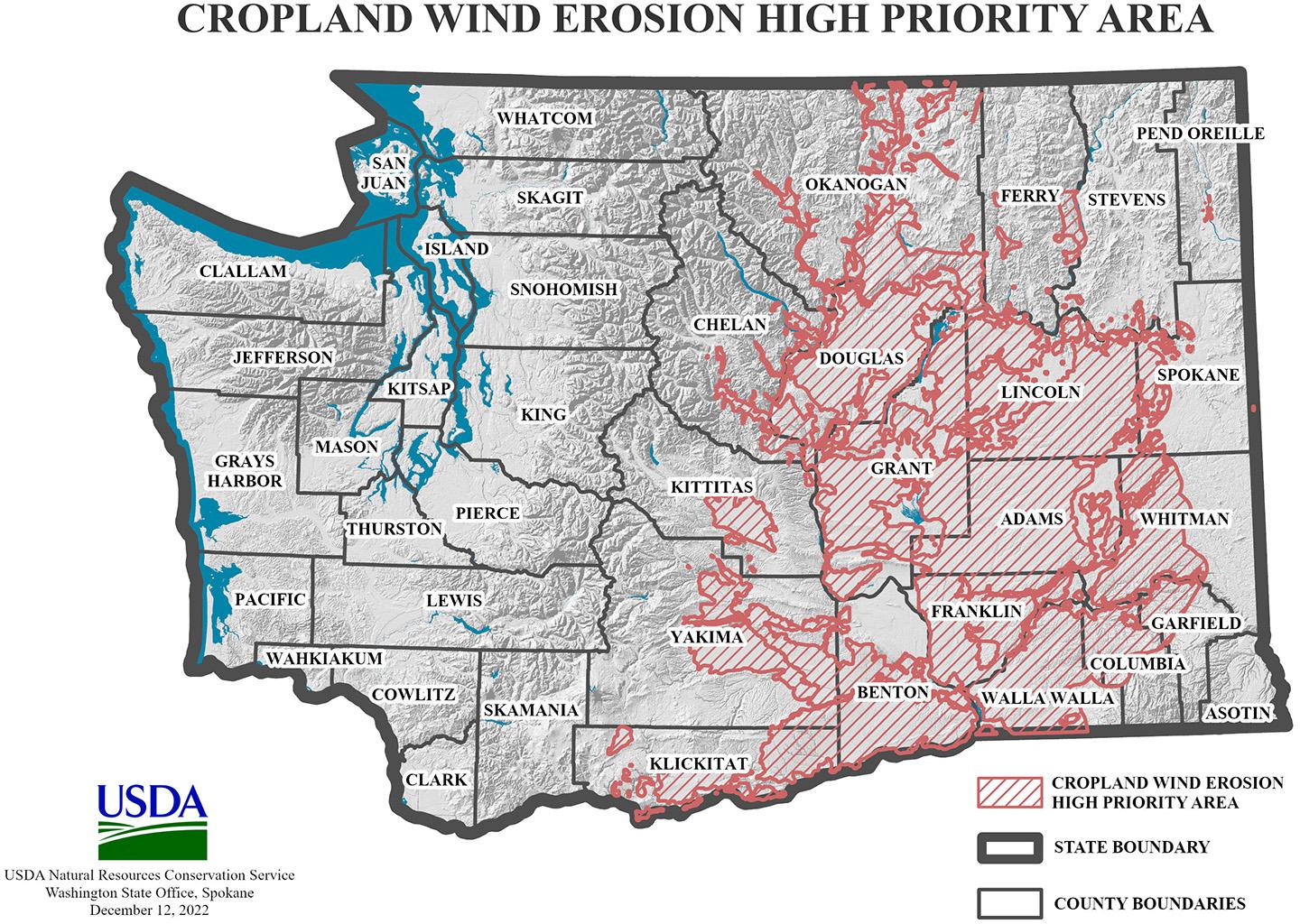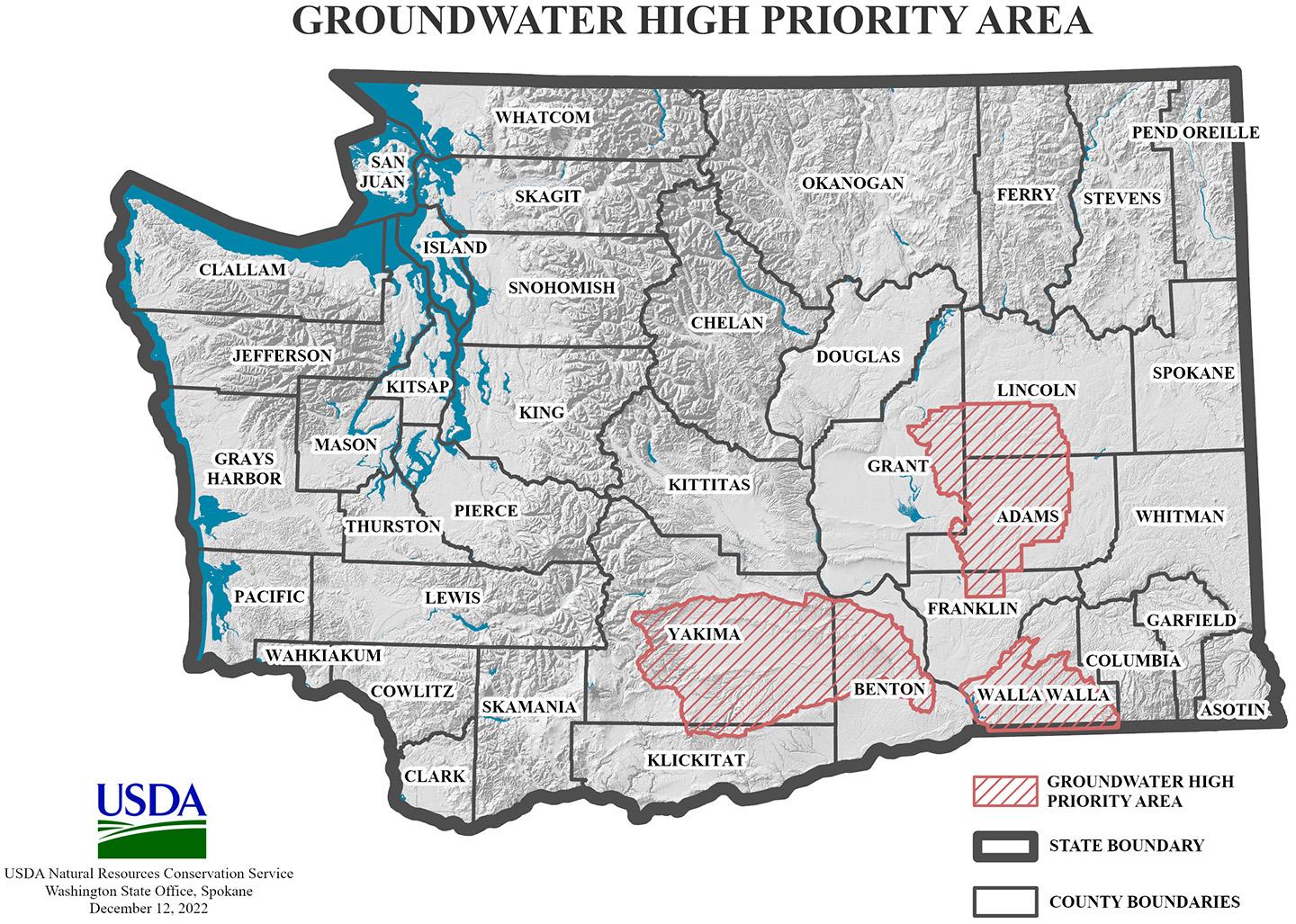EQIP CPAs, DIAs, and CEMAs
Learn about EQIP Conservation Planning Activities (CPAs), Design and Implementation Activities (DIAs), and Conservation Evaluation and Monitoring Activities (CEMAs).

The Environmental Quality Incentives Program (EQIP) is NRCS’ flagship conservation program that helps farmers, ranchers and forest landowners integrate conservation into working lands.
NRCS works one-on-one with producers to develop a conservation plan that outlines conservation practices and activities to help solve on-farm resource issues. Producers implement practices and activities in their conservation plan that can lead to cleaner water and air, healthier soil and better wildlife habitat, all while improving their agricultural operations. EQIP helps producers make conservation work for them. Financial assistance for practices may be available through EQIP. Some producers may also qualify for advance payment.
Some of these benefits include:
Watch how farmers and ranchers across the country are implementing EQIP practices and other conservation activities in our Conservation at Work video series. For example, see how producers are using the nutrient management conservation practice to improve water quality by more effectively using nutrients.
Targeted EQIP financial assistance is available through several conservation initiatives. See which initiative is available in your state.
EQIP offers grant opportunities through Conservation Innovation Grants, which awards competitive grants that stimulate the development and adoption of innovative approaches and technologies for conservation on agricultural lands.
NRCS offers technical assistance at no cost. Producers can use our personalized advice and information, based on the latest science and research, to make informed decisions about their land.
Technical Service Providers (TSP) can help producers plan, design and implement conservation practices or develop conservation activity plans to improve their agricultural operations. For more information on the Technical Service Provider program, visit the TSP page.
Technical assistance is also offered through our Conservation Technical Assistance (CTA) program.
Need a local Technical Service Provider? Visit the locate a TSP page.
The first step is to contact your local NRCS office. An NRCS conservation planner will schedule a visit to your property. They will walk the land with you to discuss your goals and review any resource concerns. Following the site visit, the conservation planner will develop a conservation plan that includes a variety of conservation practices or activities to address the resource concerns and management goals discussed.
Applications for NRCS conservation programs are accepted on a continuous basis; however, customers should apply by state-specific ranking dates to be considered for the current funding cycle.
To learn more about EQIP, contact your local NRCS office.
EQIP Data, 2009 - Present
NRCS program data are housed on the Resource Conservation Assessment Data Viewer. EQIP data for FY2009 to the present are available on the EQIP data page. Fiscal year 2014 - 2021 financial assistance data related to EQIP and other NRCS programs are available on farmers.gov.
The application batching deadline for the FY23 Organic Transition Initiative is June 1, 2023. This funding helps support producers transitioning to organic production by providing financial assistance (FA) and technical assistance (TA) to farmers choosing to implement a new organic management standard. For more information check out the article here or the OTI page.
NRCS assists applicants with installing buffers along streams and waterbodies to reduce sediment, pollutants, and decrease stream temperatures. Check out the FY2023 Riparian Buffer Program fact sheet for more information.
NRCS is working with applicants that have been impacted by flooding or wildfire on their property. Producers statewide who were impacted by wildfires will be eligible to rest their burnt grazing land for one year. Producers affected by flooding in the Nooksack and Skagit river watersheds will be eligible for assistance in repairing damage from flooding.
NRCS assists private landowners with the implementation of conservation practices on all land uses within Washington State that qualify as a LRFR
A legal entity or joint operation if all individual members independently qualify under paragraph (1) of this definition.
Urban agriculture pioneers are taking action in their communities, growing not only fresh, healthy produce, but also providing jobs, beautifying their neighborhoods, and offering access to fresh, healthy food in areas where grocery stores are sparse.
As American agriculture continues to grow in new directions, NRCS conservation assistance is growing along with it. NRCS provides technical and financial assistance for assistance for urban growers in areas such as:
• Soil Health
• Irrigation and Water Conservation
• Weeds and Pests
• High Tunnels. NRCS can provide financial assistance for high tunnels, used to extend the growing season and to protect plants from harsh weather, air pollution and pests. By making local produce available for more months in the year, fewer resources are used to transport food to plates.

Financial and technical assistance is available to support implementation of habitat restoration and enhancement projects that will benefit one or more of the following: Salmon & Steelhead or Native Olympia Oyster. Applications for projects that remove barriers for fish and other aquatic species, restore stream side riparian habitat, restore habitat in streams, rivers, and wetlands, improve floodplain habitat, and increase intertidal substrate resources for native oyster will be prioritized for funding.
Financial and technical assistance is available to support implementation of habitat restoration and enhancement projects that will benefit one or more of the following: Threatened and Endangered Wildlife (State and Federally listed), Pollinators (emphasis on Monarch Butterfly), and Wildlife Corridors. Applications for projects that improve quantity and quality of forage and cover, improve habitat connectivity, and restore habitat for sensitive species will be prioritized for funding.
NRCS developed the Sage-grouse Initiative to help private landowners voluntarily conserve sage-grouse populations and habitat on their working lands. In Washington, NRCS identified potential threats to sage grouse and their habitat and determined specific conservation practices to reduce those threats. Technical and financial assistance through EQIP is available for implementing the specific practices.
NRCS assists private landowners with the implementation of their previously developed Comprehensive Nutrient Management Plan (CNMP)
NRCS assists private landowners with the implementation of their previously developed and approved Forest Management Plan (FMP)
NRCS assists private landowners with implementation of irrigation conservation practices that improve watering efficiency.
NRCS assists private landowners with the implementation of conservation practices that reduce or eliminate Ephemeral Gully and/or Wind Erosion.
NRCS assists private landowners with the implementation of conservation practices that improve soil health.
NRCS, working with other State and Federal partners, have identified areas where focused conservation can affect Threatened and Endangered species habitat near Joint Base Lewis McChord (JBLM).
NRCS assists private landowners with the implementation of conservation practices on all landuses within Washington State that qualify as a Beginning Farmer or Rancher.
The term “Beginning Farmer or Rancher” means a participant who:
In the case of a contract with an individual, individually or with the immediate family, material and substantial participation requires that the individual provide substantial day-to-day labor and management of the farm or ranch, consistent with the practices in the county or State where the farm is located. In the case of a contract made with a legal entity, all members must materially and substantially participate in the operation of the farm or ranch. Material and substantial participation requires that the members provide some amount of the management, or labor and management necessary for day-to-day activities, such that if the members did not provide these inputs, operation of the farm or ranch would be seriously impaired.
NRCS assists private landowners with the implementation of conservation practices on all land uses within Washington State that qualify as Socially Disadvantaged Farmer or Rancher.
The term “Socially Disadvantaged” means an individual or entity who is a member of a socially disadvantaged group. For an entity, at least 50 percent ownership in the farm business must be held by socially disadvantaged individuals. A socially disadvantaged group is a group whose members have been subject to racial or ethnic prejudice because of their identity as members of a group without regard to their individual qualities.
These groups consist of the following:
Note: Gender alone is not a covered group for the purposes of NRCS conservation programs. The term entities reflect a broad interpretation to include partnerships, couples, legal entities, etc.
NRCS assists Tribes with the implementation of conservation practices for identified Plant/Animal/Aquatic species of cultural importance to each Tribe.
Incentive contracts are an option available through EQIP that offers producers financial assistance to adopt conservation management practices on working landscapes. Producers may use incentive contracts as a “steppingstone” from correcting resource issues on specific land units through EQIP to achieving sustainable stewardship on their entire operation. Conservation Incentive Contracts are available nationwide and help producers address priority resource concerns, like sequestering carbon and improving water quality in high-priority areas. Incentive contracts now offers new conservation evaluation and monitoring activities (CEMA) to help report outcomes of practices.


Practice Payment Schedule
NRCS provides financial assistance for selected conservation practices. Download the Washington payment schedules to see which activities qualify, and how much financial assistance is available. Practice scenarios show examples of how financial assistance payments are calculated.
Program Contact
Joyce Trevithick, Program Liaison
Natural Resources Conservation Service
Phone:509-717-3260
Email: joyce.trevithick@usda.gov
The Environmental Quality Incentives Program (EQIP) provides financial and technical assistance to agricultural producers and non-industrial forest managers.
Learn MoreThe Agriculture Improvement Act of 2018 (2018 Farm Bill) includes provisions that address the unique circumstances and concerns of socially disadvantaged, beginning, limited resource, and veteran farmers and ranchers (“historically underserved producers”).
Learn MoreThe 2018 Farm Bill was enacted on December 20, 2018. The Farm Bill continues its strong support for conservation efforts of America’s farmers and ranchers through reauthorization and expanded flexibility of NRCS conservation programs.
Learn MoreContact your local service center to start your application.
Do you farm or ranch and want to make improvements to the land that you own or lease?
Natural Resources Conservation Service offers technical and financial assistance to help farmers, ranchers and forest landowners.

To get started with NRCS, we recommend you stop by your local NRCS field office. We’ll discuss your vision for your land.
NRCS provides landowners with free technical assistance, or advice, for their land. Common technical assistance includes: resource assessment, practice design and resource monitoring. Your conservation planner will help you determine if financial assistance is right for you.
We’ll walk you through the application process. To get started on applying for financial assistance, we’ll work with you:
Once complete, we’ll work with you on the application, or CPA 1200.
Applications for most programs are accepted on a continuous basis, but they’re considered for funding in different ranking periods. Be sure to ask your local NRCS district conservationist about the deadline for the ranking period to ensure you turn in your application in time.
As part of the application process, we’ll check to see if you are eligible. To do this, you’ll need to bring:
If you don’t have a farm number, you can get one from USDA’s Farm Service Agency. Typically, the local FSA office is located in the same building as the local NRCS office. You only need a farm number if you’re interested in financial assistance.
NRCS will take a look at the applications and rank them according to local resource concerns, the amount of conservation benefits the work will provide and the needs of applicants. View Application Ranking Dates by State.
If you’re selected, you can choose whether to sign the contract for the work to be done.
Once you sign the contract, you’ll be provided standards and specifications for completing the practice or practices, and then you will have a specified amount of time to implement. Once the work is implemented and inspected, you’ll be paid the rate of compensation for the work if it meets NRCS standards and specifications.